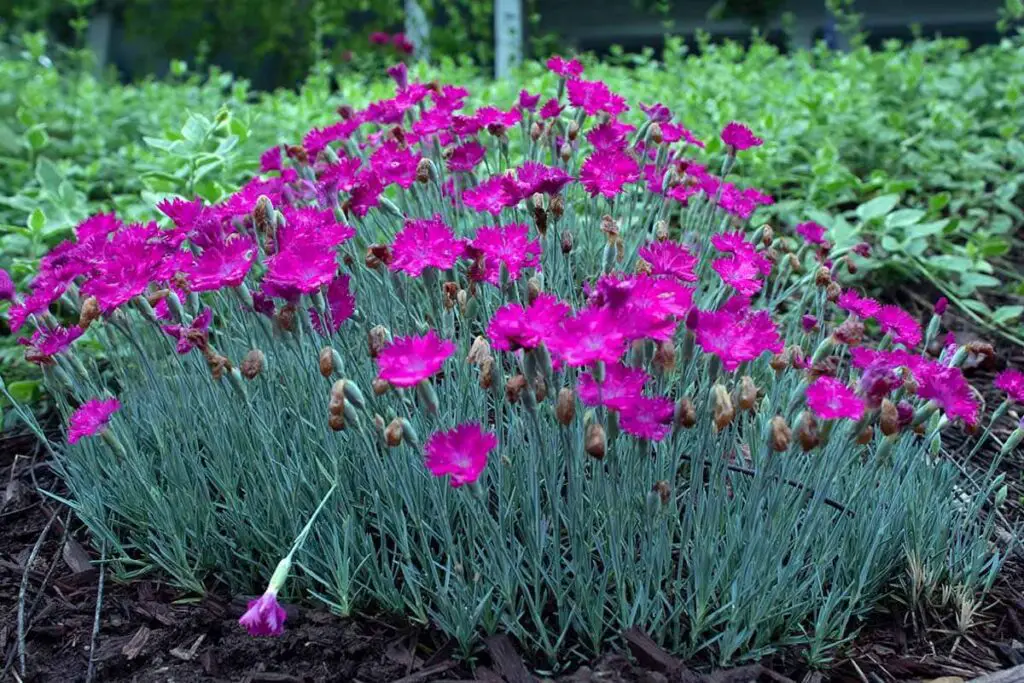Introduction:
Welcome to the world of botanical wonder, where the Firewitch Dianthus reigns supreme. In this article, we delve into the captivating essence of this exquisite flower, exploring its origins, characteristics, cultivation tips, and more. Join us on a journey through the vibrant tapestry of nature’s beauty embodied in the Firewitch Dianthus.
Exploring the Firewitch Dianthus
Understanding the Firewitch Dianthus
The Firewitch Dianthus, scientifically known as Dianthus gratianopolitanus ‘Firewitch’, is a perennial herbaceous plant renowned for its striking magenta-pink flowers and silvery-blue foliage. This botanical gem hails from the rugged landscapes of Europe, where it thrives in rocky, well-drained soils.
Distinctive Features
Admired for its compact form and prolific blooming habit, the Firewitch Dianthus boasts petite, fragrant blossoms that adorn its wiry stems from late spring to early summer. Its narrow, grass-like leaves add a contrasting texture, while its low-growing profile makes it an ideal choice for borders, rock gardens, and containers.
Cultivation and Care
To cultivate the Firewitch Dianthus successfully, ensure it receives ample sunlight and well-drained soil with moderate moisture levels. Prune spent flowers to encourage continuous blooming and apply a balanced fertilizer during the growing season. With proper care, this resilient perennial will reward you with years of vibrant beauty.
Landscaping Ideas
Elevate your garden aesthetic with the enchanting presence of Firewitch Dianthus. Plant them in mass plantings for a spectacular burst of color, or tuck them into crevices along pathways and retaining walls for a whimsical touch. Their versatility extends to mixed borders, where they harmonize with a myriad of companion plants.
FAQs about Firewitch Dianthus
- How often should I water Firewitch Dianthus?
- Water Firewitch Dianthus regularly, ensuring the soil remains evenly moist but not waterlogged. Allow the top inch of soil to dry out between waterings to prevent root rot.
- Are Firewitch Dianthus deer-resistant?
- Yes, Firewitch Dianthus is known for its deer-resistant properties, making it an excellent choice for gardens frequented by wildlife.
- Can Firewitch Dianthus tolerate cold temperatures?
- Firewitch Dianthus is remarkably cold-hardy, thriving in USDA zones 3-9. However, providing a layer of mulch during winter can offer added protection in harsh climates.
- Do Firewitch Dianthus attract pollinators?
- Yes, the vibrant blooms of Firewitch Dianthus attract butterflies, bees, and other pollinators, enhancing biodiversity in your garden.
- How do I propagate Firewitch Dianthus?
- Firewitch Dianthus can be propagated through division or stem cuttings. Divide mature plants in early spring or take stem cuttings in summer, ensuring each division or cutting has roots attached for successful establishment.
- Is Firewitch Dianthus prone to any pests or diseases?
- While generally resistant to pests and diseases, Firewitch Dianthus may occasionally encounter issues such as aphids or powdery mildew. Monitor your plants regularly and address any problems promptly with organic pest control methods.
Conclusion: Embrace the Magic of Firewitch Dianthus
In conclusion, the Firewitch Dianthus epitomizes the essence of botanical elegance, captivating garden enthusiasts with its vibrant blooms and resilient nature. Whether adorning borders, rockeries, or containers, this enchanting perennial adds a touch of whimsy to any landscape. Embrace the magic of Firewitch Dianthus and elevate your outdoor space with its timeless allure.


